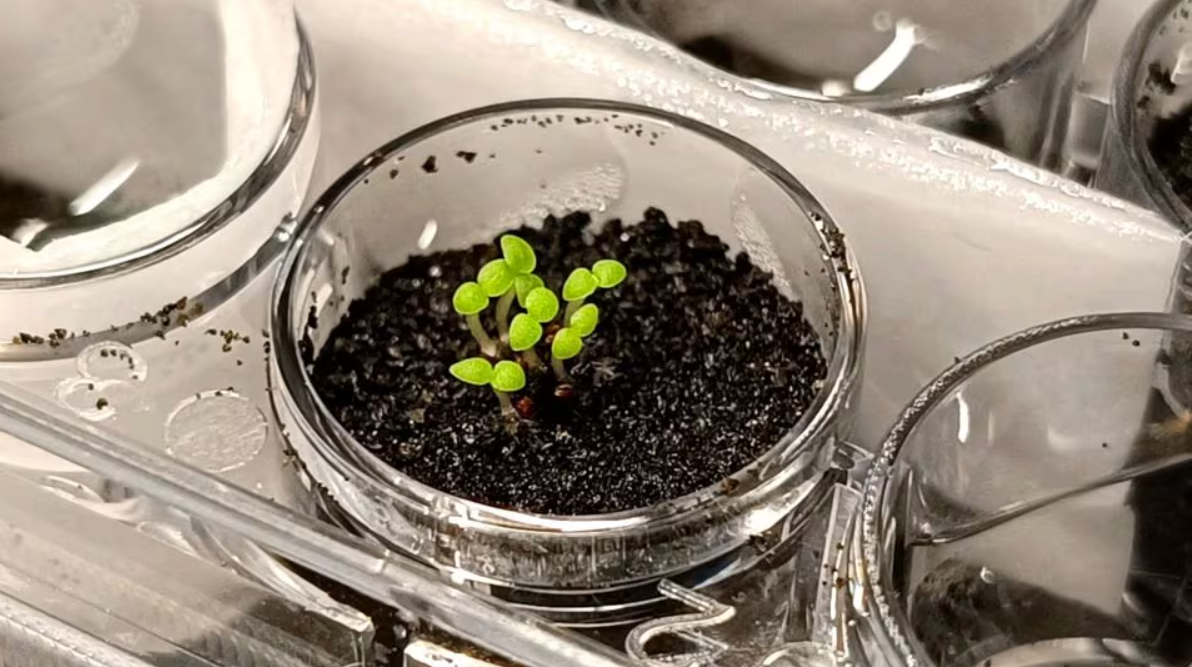
©Reuters
Vocabulary:
- bacteria /bak-TEER-ee-uh /
- clarify /KLAR-uh-fahy /
- prompt /prompt /
- dissolve /dih-ZOLV/
- cultivation /kuhl-tuh-VEY-shuhn /
[noun] – very small organisms that are found everywhere and are the cause of many diseases
Farmers added beneficial bacteria to the soil to improve crop growth.
[verb] – to make something clear or easier to understand by giving more details or a simpler explanation
The teacher clarified the confusing concept, making it easier for the students to understand.
[verb] – to make something happen
The unexpected noise prompted everyone in the room to turn around and look.
[verb] – (of a solid) to be absorbed by a liquid, especially when mixed, or (of a liquid) to absorb a solid
Stirring the sugar in the water helped it dissolve completely.
[noun] – the act of preparing land and growing crops on it, or the act of growing a particular crop
The gardener emphasized the importance of proper cultivation practices for a thriving garden.
Article reading:
The researchers clarified that the bacteria altered the lunar soil’s acidity, resulting in a lower pH environment. This acidity prompted previously insoluble phosphate-containing minerals to dissolve, releasing essential phosphorus for plant growth. Yitong Xia, the lead author of the study from China Agricultural University, stressed the significance of these findings, envisioning the potential use of these bacteria to convert lunar regolith into a suitable substrate for plant cultivation, ensuring a stable food source for potential lunar settlements. In alignment with these developments, a Reuters report highlighted a significant breakthrough in making lunar soil suitable for agriculture, potentially enabling prolonged human habitation on the moon by ensuring a reliable food source and paving the way for sustainable agriculture systems meeting long-term food and oxygen needs.
Discussion Questions:
- Have you ever considered the idea of humans living on the moon? If yes, what aspects do you find intriguing or challenging about the prospect of lunar colonization? If not, what are your initial thoughts on the concept?
- In the article, Chinese researchers introduced specific bacteria to lunar soil to enhance its fertility for plant growth. Can you think of any parallels in your own experiences where a small change or innovation led to significant positive outcomes? If yes, what was the situation, and how did it unfold? If not, can you imagine scenarios where small interventions could lead to substantial improvements?
- Do you think the recent breakthrough in making lunar soil suitable for agriculture is a significant step toward the possibility of human colonization on the moon?
- How might the ability to cultivate plants on the moon impact the sustainability of potential lunar colonies, especially concerning long-term food sources and environmental considerations?
- Considering the challenges associated with traditional farming on Earth and the unique conditions of the moon, what ethical considerations should be taken into account when developing agricultural practices for lunar colonization?
Summarization
Describe:
- enhance
- prolonged
- prospective
- settlement
- significance